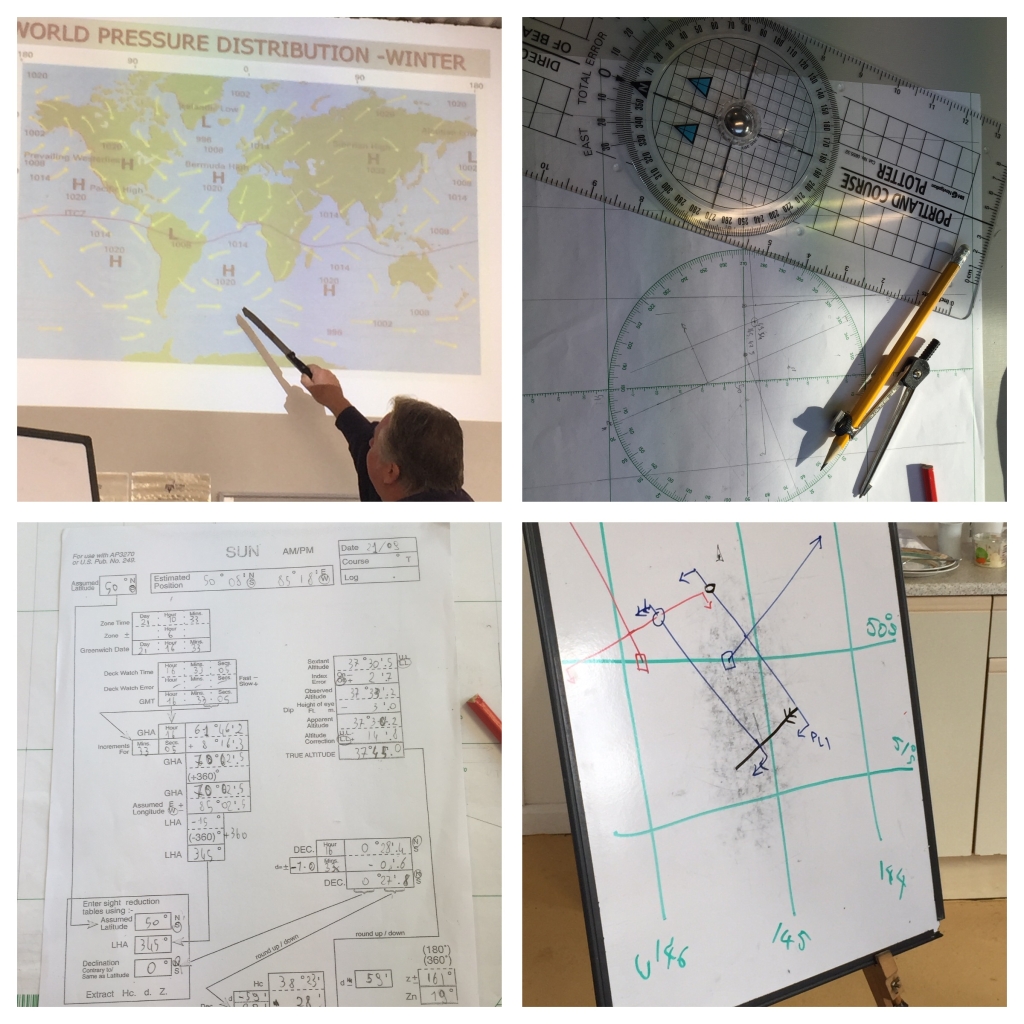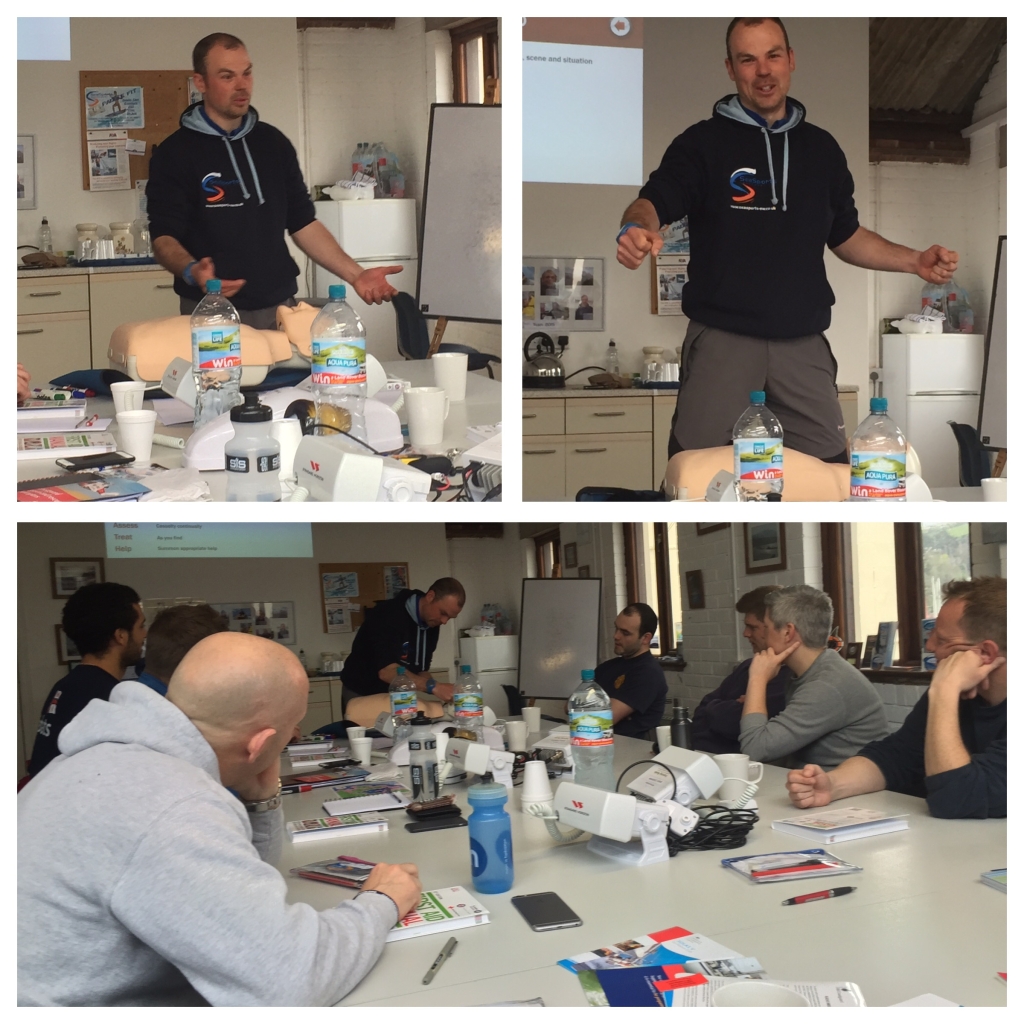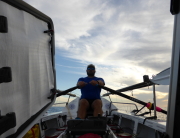It has already been a week since getting back from Teignmouth in Devon for a eight day crash course in safety, survival, communication and navigation at sea. Although intense, it was a truly great experience and a chance to meet some of the other teams that in December will take part in the Talisker Atlantic Challenge.
The first day focussed on how to operate a radio at sea, what to say, how to say it and most importantly what not to say! The first day was interesting and in the end I managed to pass the exam so in theory, and let’s hope this will never happen, I can now send a Mayday correctly. On the positive side I can now correctly spell my name using the phonetic alphabet when on the phone to the bank to explain large payments for things like life rafts, parachute anchors and water makers.
The second day focussed on first aid – this was a bit troubling as most activities and techniques assumed the presence of at least two people in the boat. At least I did quite well in the self-dressing competition which is quite reassuring if I do cut myself or break a bone. The instructor recreated the deck of the boat with tape on the floor of the classroom to give us a sense of what it would be like to deal with injuries in the confined space of an ocean rowing boat. This definitely made everything more challenging.
Day three was when the challenge ahead truly became apparent – this was the start of very intensive six days of RYA Yachtmaster Training. The course was taught by Paul Cunningham, a highly experienced sailor and navigator. He was also an amazing character which made the course somewhat fun, mixing notion on how to predict the weather and navigate using the stars and planets with very dark jokes about life, and often death at sea! After a morning in the classroom, in the afternoon we went to the swimming pool of a local hotel wearing oilskins and lifejackets to get a sense of what life in a liferaft could be like. I really hope I never have to go into one of them again. You can’t imagine how uncomfortable and claustrophobic a life raft is until you’ve been in one. I guess this would be one of the few benefits of rowing solo – I won’t have to share one!
They are also very fragile and the one that we used to practice in didn’t survive a couple of hours in a swimming pool so I’m not sure how it would survive days adrift in an ocean.
The next five days focussed on currents, tides, weather, sextants, charts (never use the word map in front of Paul Cunningham if you value your life) and celestial navigation. The course is often taught over a period of several months but Paul did a fantastic job of squeezing everything into five days! Celestial navigation was challenging, very challenging, so the next few days were spent calculating (often wrongly) positions on charts based on sextant readings and tables put together by very very smart people over the centuries. This is when I found myself wishing I’d spent some more time reading the recommended books before the start of the course. Paul reassured us saying that by Thursday everything would make sense and he was right, although it was probably very late Thursday night by the time the penny finally dropped.

All the theory was finally tested in an exam on the Friday which I managed to pass. It was a struggle but it was great to learn new skills and I’m now a qualified RYA Ocean Yachtmaster which means that I’ll be able, legally, to start my ocean crossing.
The week was very hard but it was made a lot easier by the great people on the course, which I very much look forward to seeing again at the start of the race, by the Sea Sports South West team, and by Paul Cunningham.













Scrivi un commento